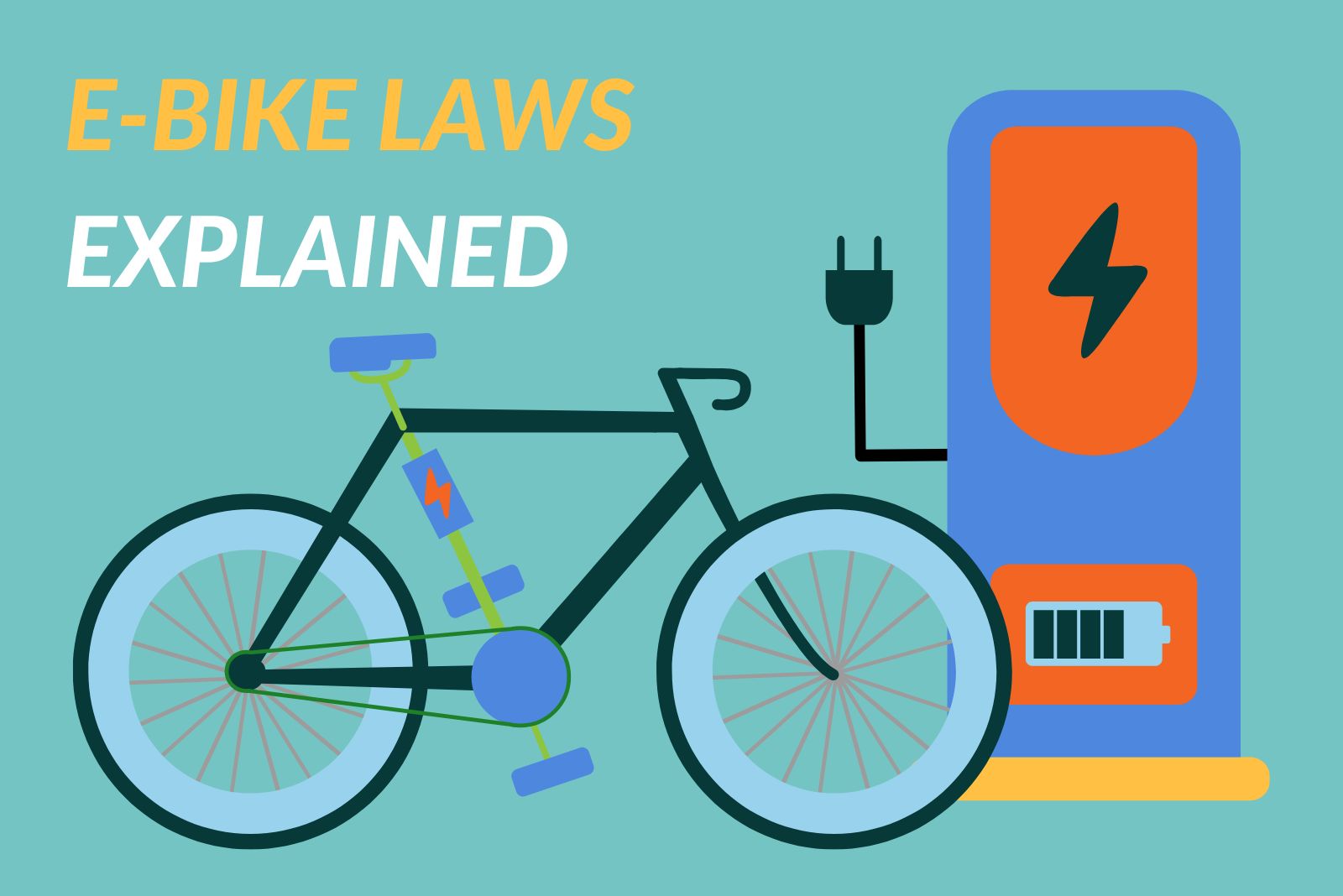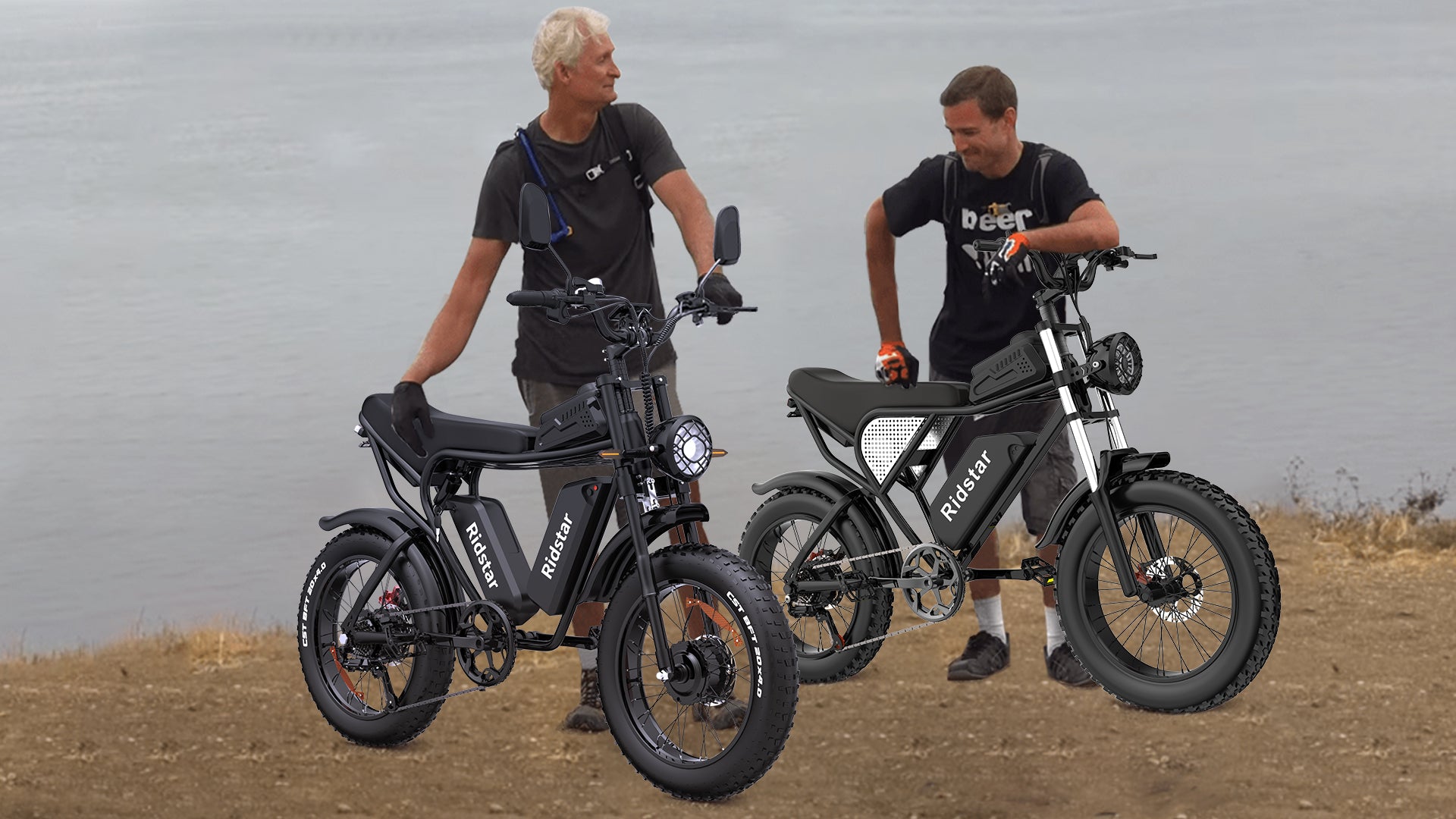Fat Tire Ebikes vs. Regular Ebikes Which is the Better
Described as the "monster trucks" of cycling, fat tire bikes are known for their ability to tackle challenging terrains that would pose a challenge for bicycles. Featuring tires and a sturdy design, these bikes offer a sense of adventure and versatility that's hard to match.
However, beyond their appearance, what distinguishes fat tire ebikes is whether they are an intelligent choice for the average cyclist.
This article delves into the world of fat tire e-bikes, exploring their applications, benefits, and drawbacks.
Additionally, we will discuss factors to keep in mind if you're considering purchasing one, such as understanding battery life and motor power nuances and choosing the correct tire width for your riding experiences.
This piece compares these bikes with e-bike models to assist potential buyers in deciding which type of bike best suits their cycling requirements and budget.
Whether you're thinking about upgrading your ride or entering the realm of bikes for the first time, come along with us as we investigate whether investing in fat tire e-bikes is a wise decision or simply an intriguing trend in the cycling world.
Understanding Ebikes: The Basics and Beyond
Bikes, also known as e-bikes, mark an advancement in cycling by merging traditional pedaling with electric assistance.
A key innovation in this realm is the tire e-bike, which is compared to rugged monster trucks in the biking community due to its wide tires and sturdy build.
What exactly makes a fat tire bike stand out?
Typically, these bicycles are fitted with a minimum of 3.8 inches wide, notably broader than the standard 2-inch tires on regular bikes.
The increased width of the tires enables fat tire e-bikes to maneuver through unstable terrains such as snow, sand, and mud – areas where bikes with thinner tires struggle.
The Appeal of Fat Tire Ebikes
The draw of tire e-bikes lies in their exceptional capability to conquer various challenging surfaces.
This versatility appeals greatly to thrill seekers looking to venture off-road onto trails, beaches, or snowy tracks.
Furthermore, tires' larger surface areas offer grip and stability, boosting rider comfort and safety in demanding conditions.
Yet the advantages go beyond practicality. The distinct appearance and commanding presence of tire bikes also contribute significantly to their popularity, attracting those looking to make a statement in urban settings or find a bike that matches their adventurous spirit.
Practical Considerations
While the benefits are compelling, potential buyers should also consider these aspects.
Fat tire electric bikes typically require power to overcome the increased tire resistance.
This requirement can result in battery consumption, potentially reducing the range compared to electric bikes.
Moreover, these bikes' considerable size and weight can make them less agile in some areas and more challenging to store or transport.
Therefore, understanding the components and characteristics of fat tire bikes is essential when assessing their suitability for your cycling requirements.
Key Differences Between Fat Tire Ebikes and Regular Ebikes
When choosing between a fat bike and a standard e-bike, it's crucial to understand the basic differences between the two bike types.
These variances do not impact performance and comfort. Also, determine where and how each bike can be effectively utilized.
Tire Size and Impact on Performance
The noticeable contrast between tire electric bikes and standard electric bikes lies in the width of their tires.
Fat tires, usually measuring between 3.8 inches and over 5 inches wide, offer an advantage when riding off-road.
They spread the rider's weight across a surface area, reducing pressure on the ground and preventing the bike from sinking into the terrain.
This feature proves helpful in snowy, muddy conditions.
Conversely, regular electric bikes with tires are quicker and more efficient on roads and solid surfaces because they have less rolling resistance and are weightier.
Weight Differences and Material Construction
Electric bikes are naturally heavier than bikes with fat tires. This is not only due to their tires but also because they require sturdier frames to withstand the added strain of off-road riding.
The weight difference can impact the bike's maneuverability and energy efficiency. Nevertheless, advancements in material technology have resulted in frames that do not compromise durability.
Regular electric bikes are lighter in weight and more accessible to maneuver. They suit commuters or individuals needing to carry their bikes upstairs or onto transportation.
Battery Life and Power Output Comparisons
The power systems of tire bikes prioritize providing increased torque for handling challenging terrains while compensating for the higher rolling resistance of fat tires.
This configuration often increases battery usage compared to bikes, resulting in travel distances at a single charge depending on the terrain and riding conditions. On the contrary, standard e-bikes may provide a range per charge because of their effective power utilization on smoother surfaces.
These differences highlight the importance of selecting an e-bike based on the rider's environment and riding purposes. Investing in a fat-tire bike might be more advantageous for individuals who navigate terrains or seek a bike for various conditions. Conversely, a standard motorcycle could be a more practical and cost-efficient choice for riders using their bike for city commuting on roads.
Pros and Cons of Fat Tire Ebikes
Advantages:
- Terrain Adaptability:Fat tire ebikes shine on uneven, soft, or slippery terrains such as snow, sand, and trails. Their wide tires allow for a gripping ride even in conditions that would be challenging for regular ebikes.
- Stability and Comfort:The larger tires provide a cushioning effect, absorbing shocks more effectively than narrower tires. This results in a smoother ride over bumps and holes, reducing fatigue and increasing comfort.
- Versatility:These bikes are designed to handle various types of environments, making them ideal for adventurers who enjoy exploring different terrains without switching bikes.
Disadvantages:
- Cost:Fat tire ebikes generally come with a higher price tag due to more robust materials and advanced features necessary to support their design.
- Weight and Bulk:The hefty frame and wide tires make these bikes heavier and bulkier, posing challenges for storage and transport, especially in urban settings.
- Increased Effort:The wider tires create more rolling resistance, requiring more energy to pedal and maneuver, which can be tiring on longer rides on paved surfaces.
Pros and Cons of Regular Ebikes
Advantages:
- Efficiency and Speed:Lighter and designed for paved roads, regular ebikes are more efficient, requiring less energy to reach higher speeds. This makes them ideal for daily commuting and urban cycling.
- Maneuverability:With lighter frames and narrower tires, these bikes are more agile, making navigating through city traffic and tight spaces easier.
- Ease of Transport:Regular ebikes are easier to carry and store, a significant advantage for city dwellers who might need to lift their bikes into apartments or public transportation.
Disadvantages:
- Limited Off-Road Capabilities:Regular ebikes are not suitable for rough terrains. Their narrower tires and lighter frames are less stable on uneven surfaces, restricting their use to well-paved roads.
- Less Traction and Stability:The smaller contact area with the ground means these bikes can be less stable on wet or uneven roads, potentially increasing the risk of accidents.
Investment Analysis: Weighing Long-Term Value
When deciding which type of bike to purchase, it's essential to weigh both the cost and potential long-term advantages.
While fat tire e-bikes may have prices, they offer durability and adaptability that can be advantageous for frequent riders in diverse terrains.
Moreover, their resale value might be more excellent based on your region's demand for rugged all-terrain bikes.
On the other hand, standard e-bikes, although less versatile, could provide value for urban commuters due to their efficiency and lower maintenance expenses.
They are also better suited for riders who mainly ride on roads and require a bike that's convenient to handle in a city setting.
Conclusion and Recommendations
Choosing between a tiring bike and a standard electric bike depends mainly on your usual riding surroundings and personal preferences.
If you often venture off the routes, opting for a fat tire bike could be wise.
On the other hand, a standard electric bike might be more practical for city commuters and individuals who value the ease of navigating and storing their bikes.
In the end, the ideal choice is one that complements your lifestyle, cycling routines, and the terrain you encounter frequently.
Carefully consider these aspects when selecting a bike that will offer value and pleasure throughout its lifespan.
FAQs
What are the main benefits of fat tire ebikes?
Fat tire ebikes excel on rough terrains, offer increased stability, and provide a comfortable ride with their wide tires.
Are regular ebikes more efficient than fat tire ebikes?
Yes, regular ebikes are lighter and faster on paved roads, making them more energy-efficient and suitable for urban commuting.
Which type of ebike is better for city use?
Regular ebikes are better for city use due to their agility, ease of transportation, and efficiency on smooth, paved surfaces.



